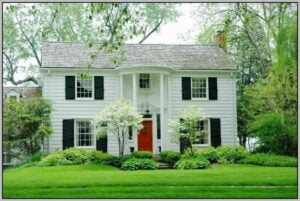Increasingly, carbon fiber products are being used in residential foundation repair. And SEALED is pleased to be part of that revolution. There are many advantages. Carbon fiber is very lightweight, particularly when compared to steel, It is almost always less expensive than steel, and rarely involves digging into existing concrete to install. Finally, the strength it adds to a wall is many times stronger than the steel commonly found in these repairs. Simply put, carbon fiber is rebar on steroids.
A bowed wall is one with some version of a horizontal crack, usually near the middle of a wall, which has created a degree of deflection. The wall has literally broken. That means that the middle portion has moved inward and the wall is now angled so that the horizontal crack is closer to the middle of the basement. If that deflection is 2 inches or less, carbon fiber products may be a very good solution.
To determine how much deflection there is, a SEALED tech will drop a plumb bob or weighted string from a joist above the basement but close to the wall so that it just barely rests on the floor. Then, we measure the distance from the string to the wall at several points, both above and below the crack. The difference between the shortest and highest distance is the amount of deflection.
The fix in this event is to mimic the placement of steel beams placed vertically against the wall. These may be seen in many homes with full basements, especially those that are three or more decades old. However, at SEALED we will substitute 12″ wide carbon fiber straps for a 4″ wide steel brace.
The process begins by grinding the surface of the wall to remove paint or other material and to scuff up (or scarify) the wall. All paint must be removed so that the epoxy will adhere to the bare concrete. Then a clear two-part adhesive epoxy is applied to the wall until it is saturated.
Next, the carbon fiber strap is stretched and installed so that it is in tension, on both its vertical and horizontal plane. Only a strap of carbon fiber fully in tension and secured to the wall can arrest any further movement of the wall. After the strap is in place, we apply additional epoxy thoroughly saturating the carbon fiber so that it is embedded in epoxy. It will completely dry in a matter of hours.
Carbon fiber comes with the tows (ribbons of carbon fiber twisted into threads) oriented on a vertical or horizontal basis. It can also be created in a bi-directional strap with tows running in both directions. For a bowing wall repair, SEALED will use the vertical orientation so that the strength extends from the top to the bottom of the wall. You may be able to see the tows running up and down in this picture.
Finally, heavy steel brackets are placed against the wall and bolted into the joists in two directions. You will note that they are placed at the top of the wall and set between the carbon fiber straps. This placement plus the bolts and screws holding the bracket to the joist will not allow the wall to lean any further into the home. The combination of the carbon fiber and the brackets keep the wall in place, as it is now permanently joined to the home via the joists.
When completed, the 12-inch straps are seen here at four-foot intervals and the repair is complete. In the picture below, the horizontal crack was also injected with liquid polyurethane to ensure that no leaks occur along that crack. This job can be accomplished by a single installer in a day or two..
Simple, quick, and affordable.
If you think you may have a bowing wall, reach out to SEALED at 816.308.2881 today to arrange for a complimentary inspection.



